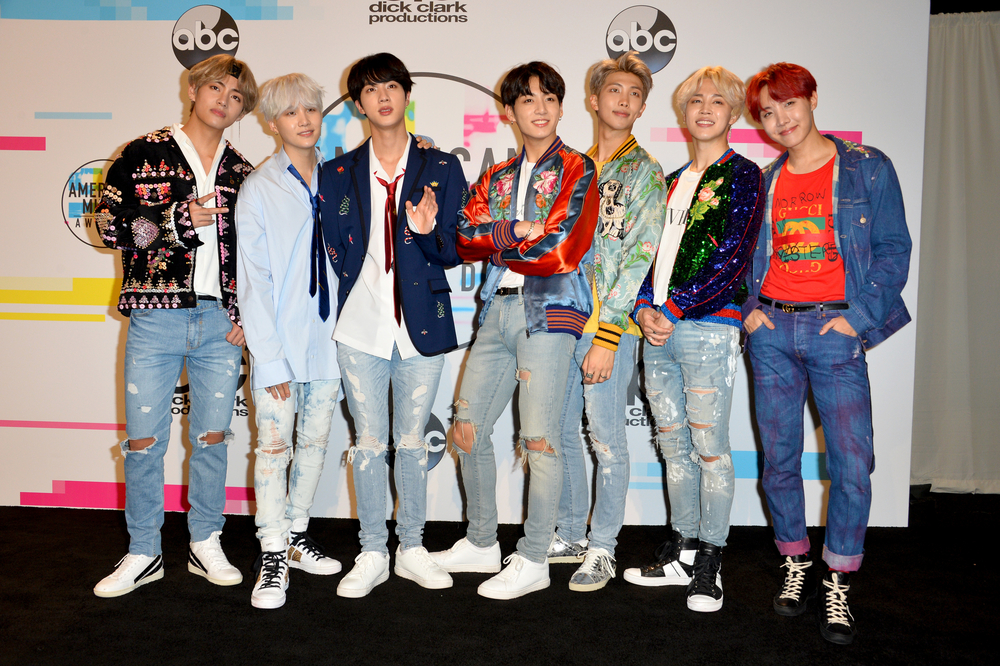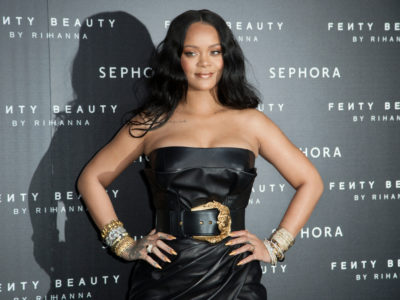The K-Pop industry has seen exponential growth through the years. Once viewed as an industry exclusively popular in Asian countries, it’s now taking significant leaps forward in global recognition.
The past decade saw K-pop groups and artists begin to top trending lists, which can be attributed to the influence of the internet culture. However, its prominence started decades before the social media age, where a surgence of talent was discovered in South Korea in a phenomenon called Hallyu, the Korean wave.
From the mid-90s through the mid-2000s, Korea’s cultural economy and pop culture through K-Pop and Korean dramas gain notoriety in countries like China and Japan. Not long after, the Korean wave extended its fanbase to the global stage, with Korean media reaching other parts of Asia, the Middle East, Latin America, and eventually the U.S.
In the global music industry landscape, K-Pop is here to stay. As marketers, this niche’s practical and powerful strategies are worth exploring, given the hype they sustain across all demographics. So, if you’re looking for informative insights into the K-Pop industry, read on and let this article discuss the genre’s mainstream rise and K-Pop marketing strategies.
An Overview of the Rise of K-Pop
K-Pop started gaining significant traction with the introduction of 2nd generation groups, such as Girls’ Generation, Super Junior, BIGBANG, Wonder Girls, and many others. While the genre’s global reach was still in its infancy at this point, these K-Pop idols laid a solid foundation for what was to come.
In 2012, K-Pop’s move into the international limelight was expedited with the release of the hit track “Gangnam Style” by Korean artist and producer PSY. The song was a worldwide viral success, with its music video reaching 4.4 billion views on YouTube. As a result, more people started to pay attention to the genre due to its unique aesthetic presentation and even more engaging tune.
With the success of Gangnam Style, the entertainment industry started to realize the viability and potential global impact of K-Pop. The genre’s reach was further solidified when 3rd generation groups like TWICE, BLACKPINK, and international superstars BTS entered the K-Pop industry.
Korean entertainment and record labels JYP, YG, SM, and HYBE, recognized the increased demand for K-Pop acts in the Western music scene and started to send their artists to perform overseas.
?? @ygofficialblink pic.twitter.com/uIZqPYs6e0
— Coachella (@coachella) April 20, 2019
Epik High and BLACKPINK were among the first K-Pop groups to perform at Coachella, which is considered to be one of the largest and most famous music festivals in the U.S. and the world. At the same time, TWICE would headline and sell out their U.S. stadium tours in under 60 minutes, making them the first female K-Pop group ever to do so.
These performances played a significant role in transforming K-Pop artists into household names. K-Pop’s stock has risen to such great heights that even international fashion brands collaborate with idols, making them global ambassadors for their luxury lines.
Simultaneously, BTS was making an indelible mark not just on the music industry but also on their country, with the act contributing a reported $3.6 billion to South Korea’s economy. They were also the first K-Pop group nominated for one of Western music’s most prestigious awards, the GRAMMYs.
[#오늘의방탄] #BTS in #GRAMMYs!
— BTS_official (@bts_bighit) April 4, 2022
We always love you,?ARMY? pic.twitter.com/8cS4ZO1FXU
The success of the Korean music industry shows no signs of slowing down, with groups like ITZY, NCT, and TXT, among many others, ready to take the mantle from their predecessors.
K-Pop’s initial promise proved more significant, as evidenced by the world’s current fascination with the genre. What was once a niche media form is now recognized as one of the fastest-rising and most prominent industries worldwide.
10 Marketing Lessons to Learn from the K-Pop Industry
Over the past decade, K-Pop has grown into a multibillion industry. The genre’s unprecedented success has led many marketers to analyze the Korean music scene and take note of marketing methods to incorporate into their own business strategies. Here are some marketing lessons you can learn from K-Pop.
- Having a strong online presence is a must
The internet has proven to be a valuable marketing tool for the K-Pop industry. Platforms such as YouTube, Instagram, Twitter, and Facebook are utilized to update fans on concerts, music releases, scheduled activities, and merchandise of their favorite idols. K-Pop labels also use apps like Bubble and V LIVE to extend artists’ reach to their supporters.
Good social media marketing initiatives ensure that the idols will always have a way to engage with their audience and remain in the public eye while not actively promoting their music. For common marketers, digitizing strategies can help reach a broader crowd that’s otherwise inaccessible through conventional marketing techniques. Adopting this tactic can also be helpful for brands to retain relevance in their industry.
- Creating original brand concepts wins new customers
K-Pop groups and artists’ initial themes rarely stick with them throughout their careers. Every comeback differs stylistically, adding another layer of excitement for each subsequent release.
aespa, an SM Entertainment girl group, is a prime example of brand concepts winning over new fans. Aside from putting out catchy tracks, the act pairs it with an alluring storyline set in the KWANGYA universe, a “shared universe” in which all SM Entertainment artists base their songs’ themes and messaging. Each new album release peels another layer of the lore, leading to heightened fan anticipation, investment, and continuous support.
Establishing an out-of-the-box brand story is crucial when running a business, as it allows consumers to recognize and remember your brand from a crowd of competitors. Additionally, it helps you build connections and trust within the industry, which aids in continuous business growth.
- Producing quality content consistently retains audiences
Aside from the music, K-Pop’s success can also be attributed to its original content production. This includes a series of music videos created by top-level production houses and a line of fan merchandise carefully crafted to the tee, which helps keep people interested and coming back for more.
Consistently creating top-notch content can also bode well for marketers across all industries. When you partner with experts in the field, you can develop new strategies for your business to keep up with the ever-changing demands of consumers, yielding great conversion, retention, and brand awareness rates.
- Building a loyal community makes a difference
Often referred to as “fandoms” or “stans,” a loyal community is integral to the success of K-Pop artists. Aside from producing unique and quality music and performances, idols gain a strong following by engaging with their fans consistently through social media, meet and greets, and other specialized events.
Dedicated fanbases can show their influence in numbers from music show voting, streaming numbers, and merchandise and album sales. In 2021, South Korea’s top 400 albums sold 57.09 million copies worldwide, a 36.9% increase despite the global pandemic.
A community’s investment in its artist is just as significant as the marketing machine behind them, making customer engagement an integral part of an overall business strategy. To convert your audience into dedicated and highly-engaged customers, you can work on revamping your customer engagement tactics.
- Focusing on inclusion establishes global reach
South Korean music labels are well-aware of their international audiences. Now, more than ever, groups are putting out tracks in different languages that their non-Korean-speaking audience can sing along to and enjoy.
For instance, “Stop The Rain” by pop rock band DAY6 is composed of Japanese and English lyrics. Meanwhile, the 13-member K-Pop boy group SEVENTEEN released their first full English single, “Darl+ing,” as a prelude to their latest studio album.
As marketers, offering inclusivity can help welcome new audiences and even penetrate a particular demographic more easily. You can accomplish this by producing material that resonates with your market, whether it be creating products certain patrons identify with, such as food offerings for the food and beverage industry, or providing translations of local language into your service pages.
- Building hype through content teasers generates results
Months before a slated album launch, Korean music labels would release teasers through concept films, photos, and short-form videos, among other content. These often draw significant attention from media outlets, thus creating buzz around the artists.
Marketers from different industries can also employ such methods to generate awareness and increase engagement with their new launches. Posting previews of their latest products and services ahead of their official release creates intrigue among consumers, contributing to the premiere’s success.
- Packaging can be a major selling point
More than the music, the K-Pop industry also raises the bar when it comes to product packaging. Korean entertainment companies make it a point to match every group’s music comeback with different album versions, including various cover art, album jackets, and overall design. This provides a unique unboxing experience for avid fans each time, which is key to keeping them in the fandom.
레드벨벳 Red Velvet 'The ReVe Festival 2022 – Feel My Rhythm' Album Detail – Orgel Version
— Red Velvet (@RVsmtown) March 16, 2022
? 2022.3.21. 6PM KST#The_ReVe_Festival_2022#Feel_My_Rhythm #필마이리듬#레드벨벳 #RedVelvet pic.twitter.com/GpdM8Y13mu
Special album packaging for K-Pop groups and artists allows their fans to identify their products on store shelves quickly. As marketers, you can implement this same strategy by creating product labels and packages that make your brand easily distinguishable to old and new customers, contributing to your business’s overall sales.
- Promoting in different media forms is essential
Popular Korean variety shows like Weekly Idol, Running Man, and Knowing Bros have provided a platform for K-Pop groups and artists to showcase their personalities and talents. These programs are often a gateway for casual viewers to become loyal fans due to their light-hearted and comedic nature.
As more global audiences get drawn to these platforms, music labels make the most of these special appearances to promote their artists’ music. While not all industries can capitalize on this type of promotion, the strategy of increasing visibility for offerings is possible through other media forms.
The rise of social media platforms like YouTube and TikTok can help digital marketers market products and services through well-thought-out showcases, interactive promotions, and short but engaging advertisements.
- Taking intervals between releases matters
K-Pop acts typically take a break between releases, with hiatuses from promotions spanning from three months to two years for older groups. This tactic allows recently released music to garner attention while giving fans time to miss their favorite artists. In addition, it provides entertainment companies time to prepare for a comeback better than the last one.
The market may become saturated with various businesses competing to launch products and services to consumers. As such, marketers can use this technique to improve their offerings to increase the chances of upcoming projects gaining widespread public attention and patronage.
- Collaborating with other players in the industry opens new opportunities
A testament to the relevance of the K-Pop genre is its artists’ ability to collaborate with musicians outside of South Korea. As an example, Wendy of Red Velvet collaborated with GRAMMY-winning artist and producer John Legend in a song called “Written In The Stars,” each recognizing the potential of breaking into other markets.
Collaborative projects, in general, allow marketers to learn from other players in the industry and explore different ways of developing marketing strategies for their own businesses. While your partners may vary in products, services, and target demographic, these endeavors let you take valuable insights while can improve your future marketing efforts.
Do Marketing Like Global Superstars
K-Pop is one of the fastest-growing industries today, in large part due to its marketing strategies. The business’s unique approach to promoting its artists has provided an excellent blueprint for marketing in the music industry and beyond.
Korean entertainment companies have recognized the importance of following market trends to stay ahead of the competition and remain relevant to audiences. With the massive success of the organizations within the K-Pop industry, it’s only fitting for marketers to study their techniques and learn a thing or two to boost their marketing efforts for their respective operations.
If you’re searching for a digital marketing agency that can provide top-notch assistance to elevate your overall marketing game, look no further than Spiralytics! Delivering effective digital marketing services since 2013, we aim to bridge the gap between engineering and empathy as we help you grow your business. Don’t hold back, get started today!





